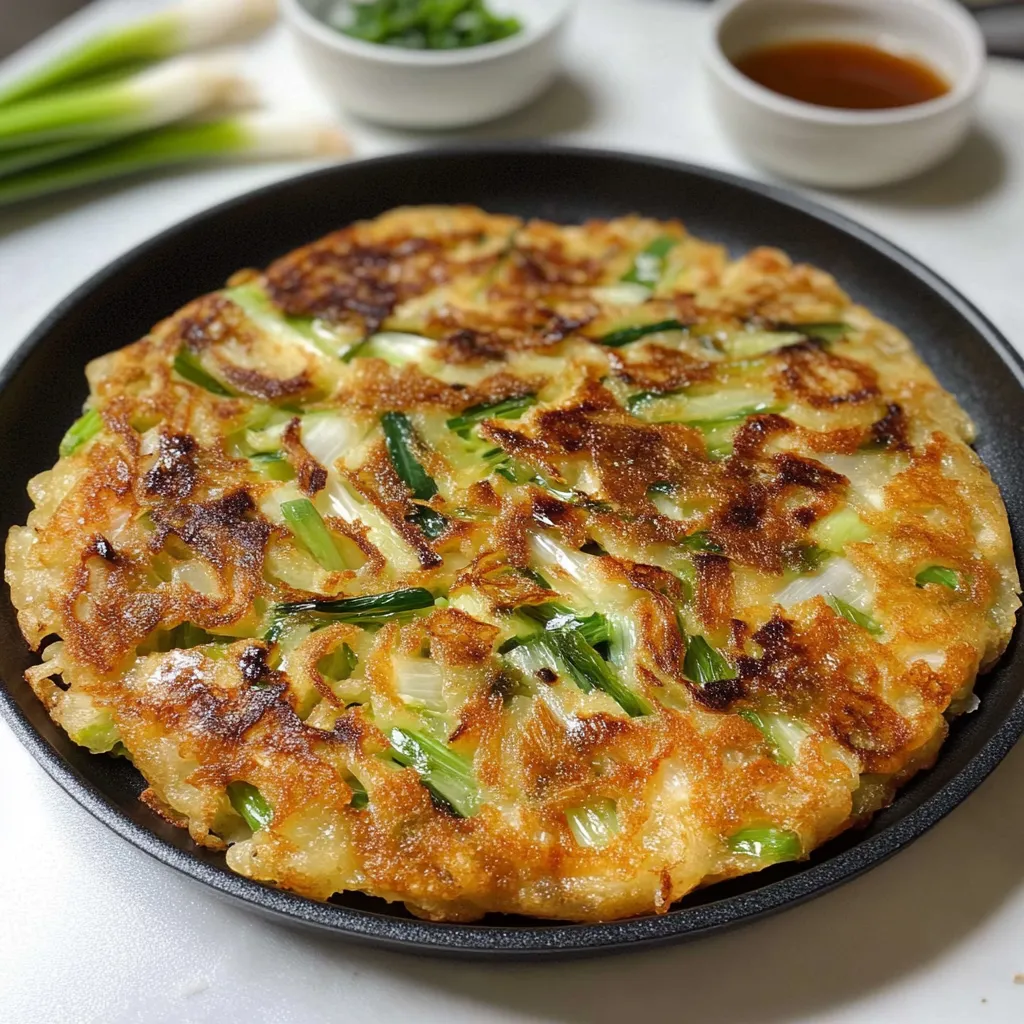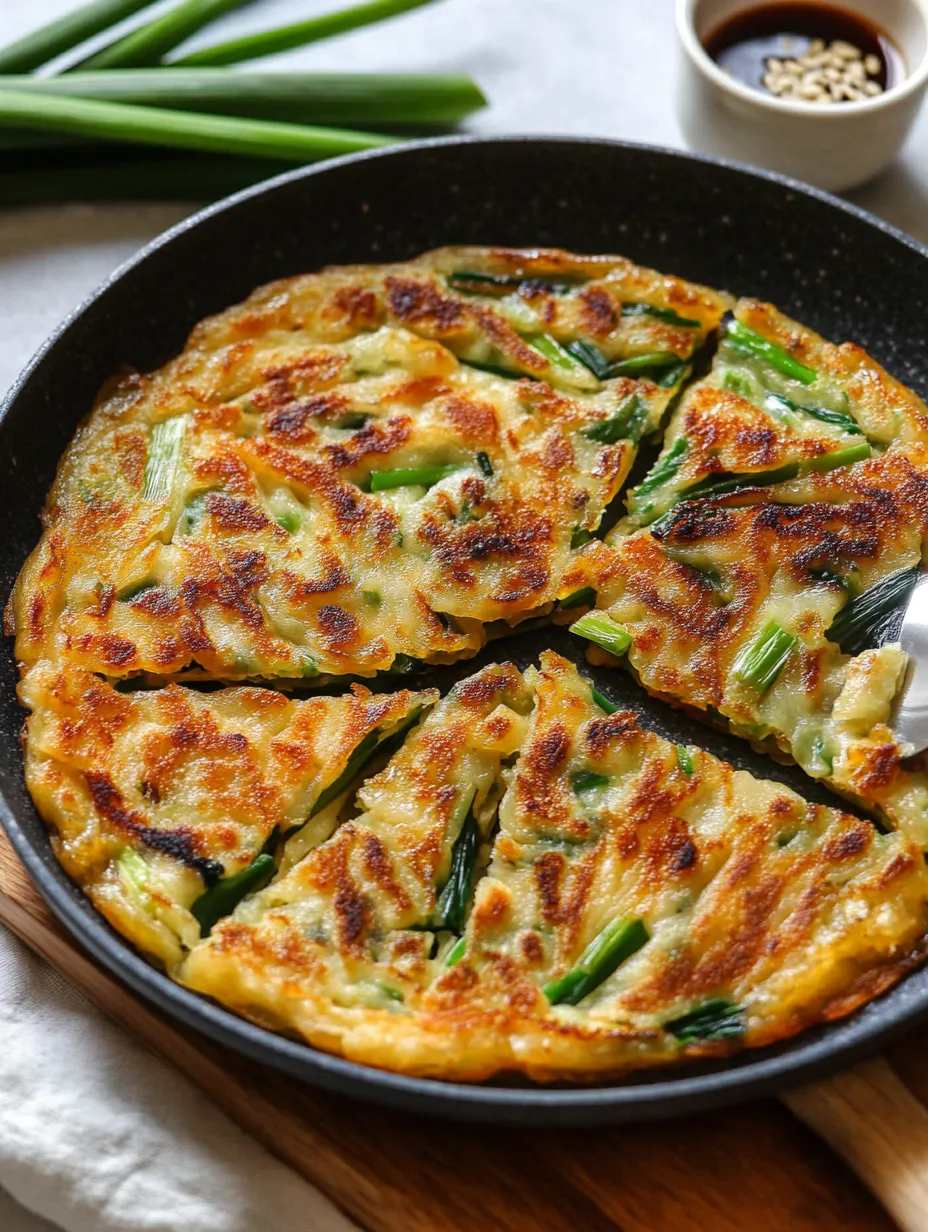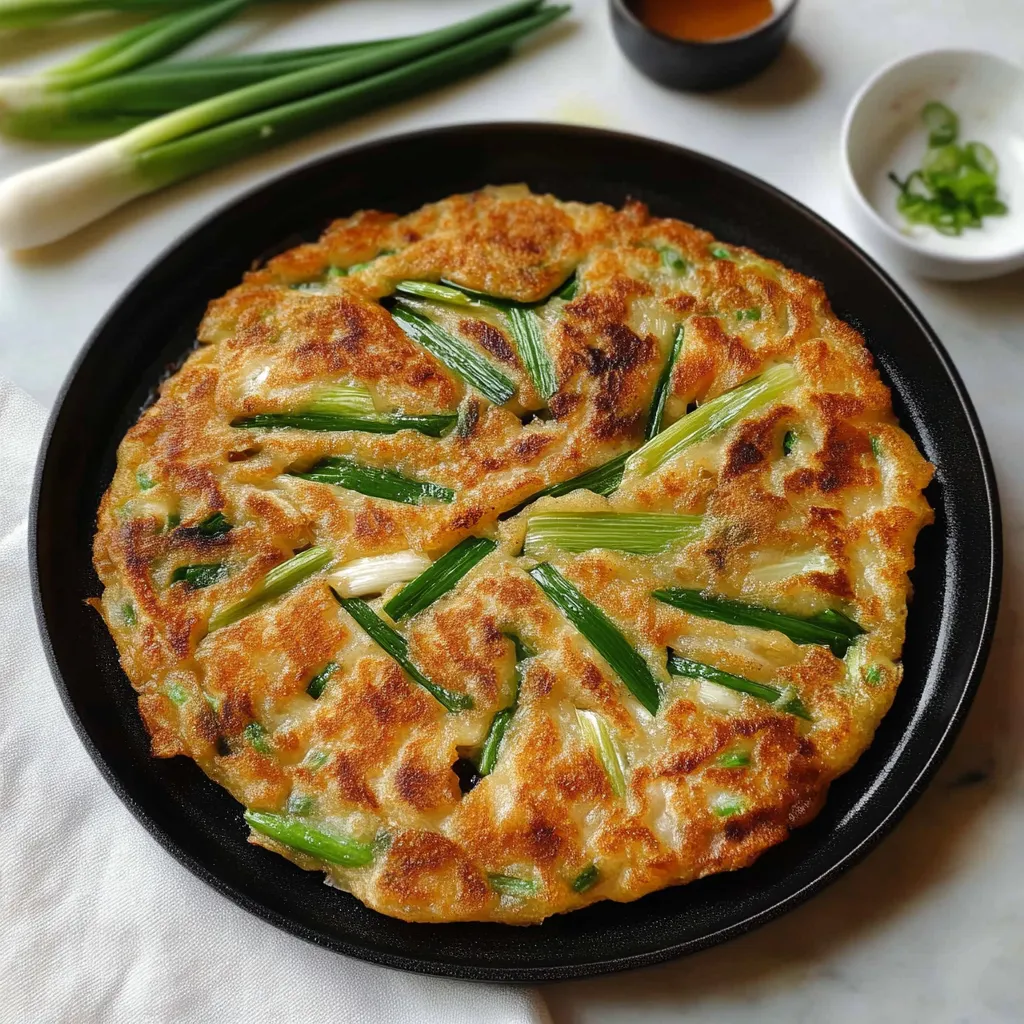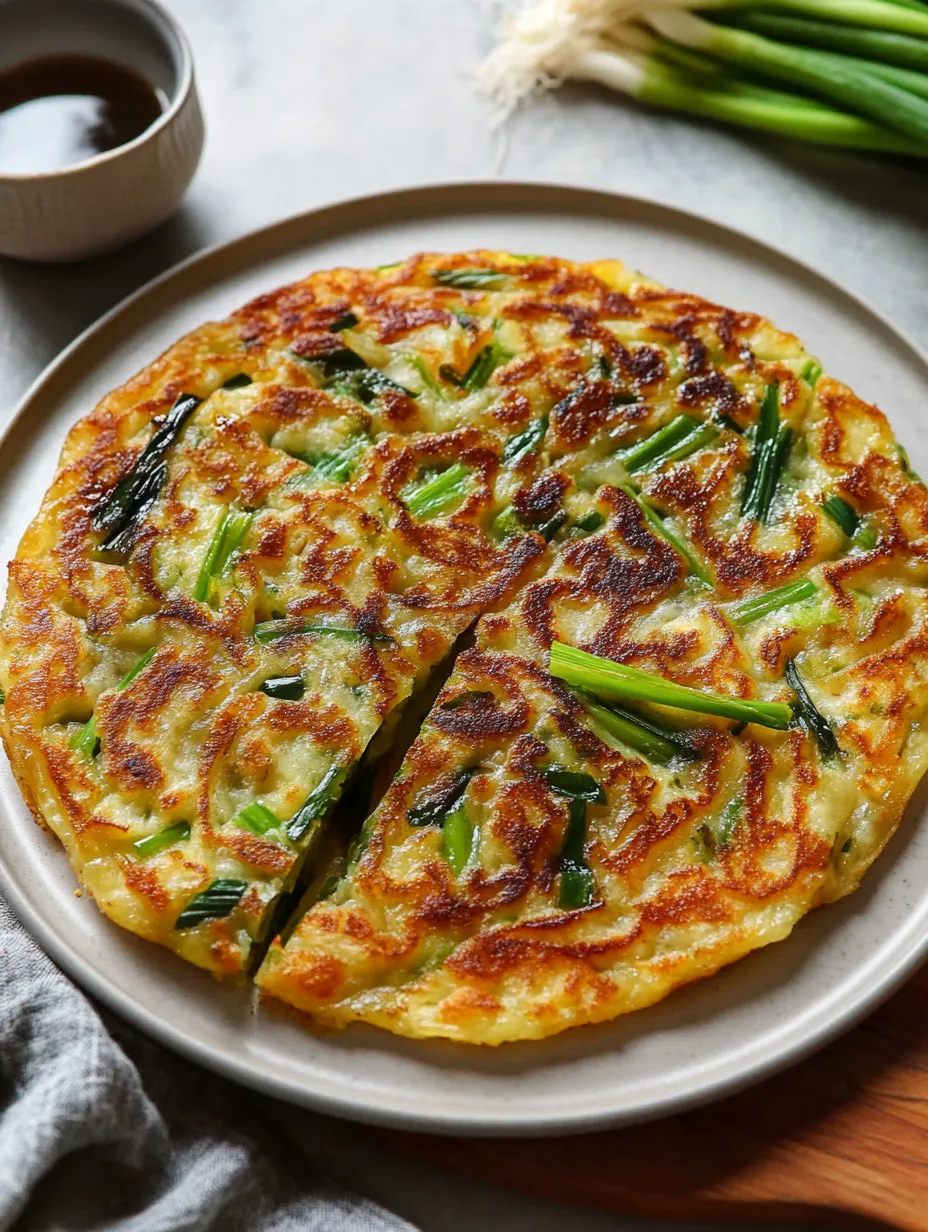 Pin it
Pin it
Korean scallion pancakes, known as pajeon, strike the perfect balance between crispy and chewy textures while delivering rich savory flavor. This traditional dish combines fresh green onions with a simple but carefully crafted batter, finished with a complementary soy-based dipping sauce. Originally enjoyed as rainy day comfort food in Korea, pajeon has become a beloved appetizer and snack worldwide.
The key to exceptional pajeon lies in proper technique and temperature control. Using ice-cold water in the batter and maintaining the right oil temperature creates that coveted crispy exterior while keeping the inside perfectly chewy.
Key Ingredients
- Green Onions: Select firm, bright green stalks
- Potato Starch: Essential for authentic texture
- Baking Powder: Creates airy crispness
- Bouillon: Enhances savory notes
- Ice Water: Critical for proper texture
- High-Heat Oil: For proper frying temperature
Step-by-Step Method
- Onion Preparation: Clean and dry thoroughly. Split thick white sections lengthwise, cut into uniform pieces.
- Mix Base: Combine dry ingredients first, then add cold water. Mix minimally to prevent toughness.
- Pan Setup: Heat non-stick pan with generous oil until shimmering.
- Onion Base: Arrange onions first before adding batter.
- Batter Layer: Pour evenly over arranged onions.
- Initial Cook: Maintain medium heat until golden underneath.
- Perfect Flip: Wait for proper set before turning.
- Final Crisping: Press gently while finishing second side.
- Serve Hot: Cut into portions immediately.
- Sauce Preparation: Mix soy sauce base with aromatics.
 Pin it
Pin it
Traditional Korean cooks emphasize patience when making pajeon. The pancake should develop a proper golden crust before any flipping attempts.
 Pin it
Pin it
Traditional Service
Pajeon holds special significance during wet weather in Korea, traditionally enjoyed with makgeolli rice wine. The combination of hot, crispy pancake with cool rice wine creates a memorable dining experience.
Recipe Adaptations
While green onions form the classic base, pajeon welcomes various additions. Common variations include mushrooms, peppers, and seafood for a heartier haemul pajeon version.
Cultural Significance
This humble pancake represents core values of Korean cuisine - balance, sharing, and transforming simple ingredients through technique. Found everywhere from home kitchens to street markets, pajeon brings people together through shared meals.
 Pin it
Pin it
Recipe Notes
Mastering pajeon demonstrates how proper technique elevates basic ingredients. The satisfying process of creation, from the sizzle of the batter to that first crispy bite, makes this dish a rewarding cooking project.
Additional Notes:
- Rice flour works for gluten-free version
- Prepare sauce first for best flavor
- Use air fryer for reheating
- Reserve some onions for garnish
- Freeze extra batter portions
Frequently Asked Questions
- → Why is cold water important?
- Using cold water helps your pancake cook up crisp on the outside.
- → What starch options work here?
- Stick to potato or corn starch; avoid rice and tapioca starch as they don’t work the same.
- → Why dry the scallions?
- Patting them dry keeps the pancake from turning mushy or soggy.
- → Can I prepare this in advance?
- Nope, this is best eaten right away while it’s fresh and crisp.
- → What pan should I use?
- A wide non-stick pan is perfect for even cooking and hassle-free flipping.
